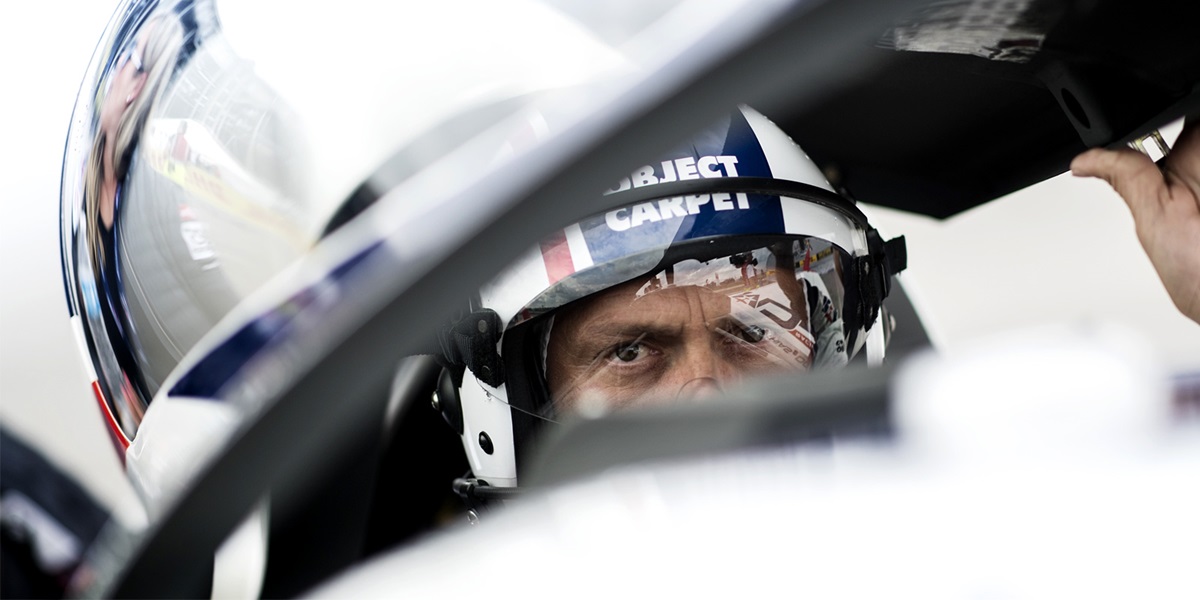
Red Bull Air Race Pilots Train in Air, on Ground for Stresses of Competition
October 10, 2017 | By Paul Kelly, Indianapolis Motor Speedway
Pilots in the Red Bull Air Race World Championship will fly in race heats that usually last just more than a minute Oct. 14-15 at the Indianapolis Motor Speedway.
So one might think maybe fitness ranks lower on the priority list for these athletes than drivers in NASCAR or INDYCAR, who compete in races at IMS lasting two to three hours or longer.
Think again.
Even though the races are short, there’s one recurring, startling statistic that keeps Red Bull Air Race World Championship pilots in training year-round to prepare for a weekend of aggressive, intense air racing – 10 G’s.

That’s the maximum force pilots experience during races, 10 times the force of gravity. For comparison, maximum forces acting on the bodies of Verizon IndyCar Series drivers are about 6 G’s. The Space Shuttle reached only 3 G’s during its ascent into orbit. A roller coaster ride tops out around 4 G’s.
Fourteen Master Class and six Challenger Class pilots will fly on a course above the IMS oval infield. Planes race against the clock at low altitude while exceeding 200 mph, navigating a low-level slalom track marked by 82-foot-high, air-filled pylons called Air Gates.
Pilots turn as quickly and efficiently as possible without pulling more than 10 G’s in the vertical turn maneuver before flying toward the next gate. Penalties are assessed for hitting the Air Gates, for speed and altitude violations or for not flying in the proper formation through certain Air Gates. The quickest pilot against the clock in each round wins.
“We’re pulling 10 Gs in every turn, 10 times your body weight,” American Challenger Class pilot Kevin Coleman said. “I think the race in Indy, the two laps will be a little over a minute, but in a minute, you got out of that plane, and it feels like you ran 5 miles. You’re completely tired. It’s definitely a physical thing when you’re in an airplane.”
Coleman, who employs a fitness trainer, and nearly all of his fellow pilots work out regularly to build their endurance and strength. Particular attention is paid to the neck and back, which bear much of the stresses of rapid changes of direction at more than 200 mph.
All Red Bull Air Race pilots also have access to treatment from series physiotherapist Daniel Rose at each race, if needed.
There’s also another way Red Bull Air Race World Championship pilots build fitness and endurance – by flying as much as possible. Just like race car drivers, seat time trains the body for the rigors of competition.
“You have to fly a lot,” two-time Red Bull Air Race World Champion Kirby Chambliss said. “If I’m out of the airplane for more than a week, my G tolerance goes way down. I have to have that G tolerance.
“We’ve got four of these airplanes, so I jump in one and go out and run it around to get some G’s, and that’s what gets my G tolerance up.”
Coleman also trains his depth perception and reaction timing in a simulator. But like Chambliss, he said flying prepares pilots the best for racing.
“The sim helps, but there’s no substitute for being in a plane,” Coleman said. “It’s the same with drivers. The sim helps, but being in the race car on the track is what helps the most.”
World champions in both classes will be crowned at IMS from a field featuring pilots from all over the world, including Americans Chambliss, Coleman and Michael Goulian. Two-time series world champion Chambliss is fourth in the tight Master Class standings with 52 points, 11 behind leader Sonka of the Czech Republic.
Visit IMS.com to buy tickets or for more information on the Red Bull Air Race World Championship. An interactive Fan Guide for the event also is available at www.ims.com/RBARFanGuide.